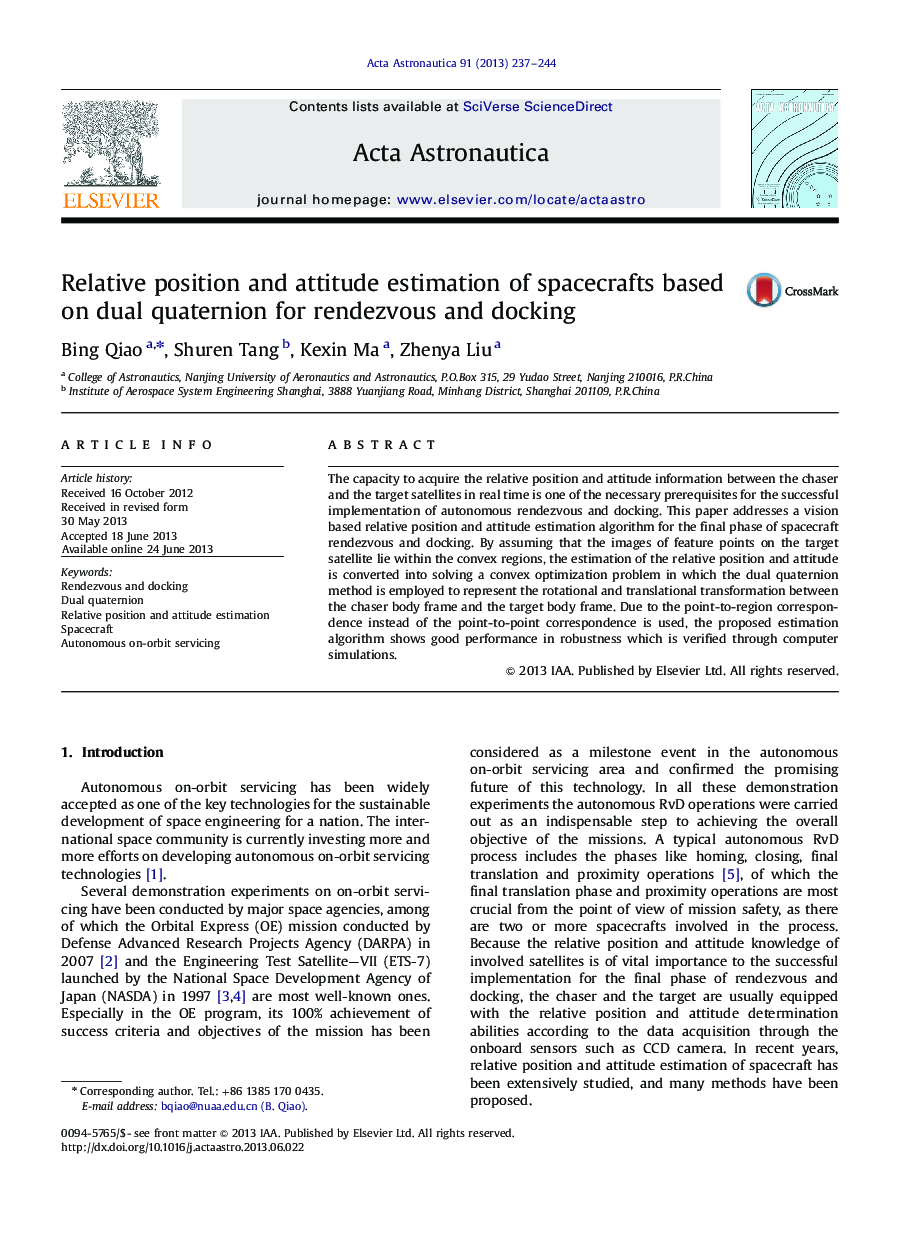| Article ID | Journal | Published Year | Pages | File Type |
|---|---|---|---|---|
| 1714726 | Acta Astronautica | 2013 | 8 Pages |
•Dual quaternion is used to represent the transformation between coordinate frames.•Point-to-region correspondence is used to develop the estimation algorithm.•Pose estimation problem is converted into solving convex optimization problems.•Simulation shows the algorithm can estimate the relative pose with high precision.
The capacity to acquire the relative position and attitude information between the chaser and the target satellites in real time is one of the necessary prerequisites for the successful implementation of autonomous rendezvous and docking. This paper addresses a vision based relative position and attitude estimation algorithm for the final phase of spacecraft rendezvous and docking. By assuming that the images of feature points on the target satellite lie within the convex regions, the estimation of the relative position and attitude is converted into solving a convex optimization problem in which the dual quaternion method is employed to represent the rotational and translational transformation between the chaser body frame and the target body frame. Due to the point-to-region correspondence instead of the point-to-point correspondence is used, the proposed estimation algorithm shows good performance in robustness which is verified through computer simulations.
